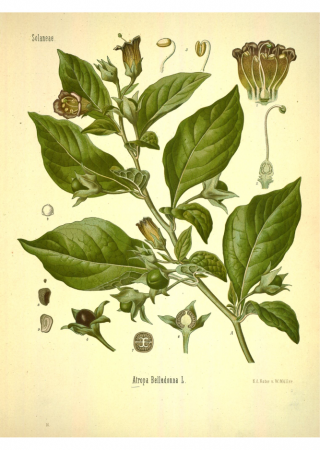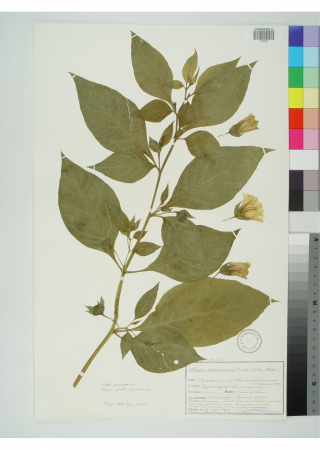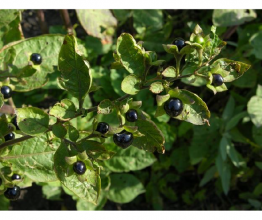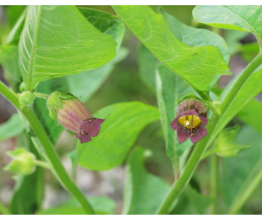Deadly nightshade
- ...nightshade is an ingredient in atropine drops, used in ocular medicine, because atropine dilates the pupils?
- ...in the early and middle ages, women of all ages rubbed belladonna juice into their eyes to make them large and beautiful, from which also comes the species name of the plant (bella donna = beautiful woman)?
- ...its use as a middle-ages cosmetic was eventually discontinued because of frequent complications, infections and poisonings, since nightshade temporarily worsens visual acuity, and during long-term use, this effect can become permanent?
- ...extract from nightshade leaves is used in analgesics to counteract cramps of smooth muscle tissue (antispasmodic)?
- ...the genus name of nightshade (Atropa) is derived from Greek mythology, where the god Atropos was one of the three gods of death, who, according the Greek mythology, ordain how a person dies?
Basic information:
Division – angiosperms (Magnoliophyta)
Class – eudicots (Rosopsida)
Maximum height – 180 cm
Distribution – Europe
Type of poison – alkaloids
Distinguishing marks:
Massive 50-180 cm tall shrub with dark purple bell-shaped flowers. The pods are shiny black berries the size of a cherry. Grows in well-lit forests all over Europe, diminishing northwards.
Deadly nightshade ranks among the most poisonous plants in Europe. All parts of the plant are poisonous, and contain tropane alkaloids. It belongs to the Solenaceae family, as do the potato and tomato. Nightshade's principal danger lies in that its berries are very pretty and look edible, have a pleasantly sweet taste, and are at eye level for children, to whom they look like overripe cherries. Two to four berries are a fatal dose for a child, an adult needs ten to twenty. The most poisonous part of the plant is the root, but the consumption of even a single leaf can be fatal for an adult. Symptoms are initially a red face, dry mouth, dilated pupils and quickened pulse; in later stages, heart arrhythmia, tremors, hallucinations, paranoia and cramping.





